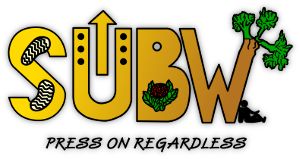by Frank Peters (PRA)*
My active association with the SUBW was from its foundation period until I became a “franc millionaire” on joining the South Pacific Commission in 1951. My association continued through membership of UAC during leave periods and after our return to Australia in 1960.
Other than bushwalking, I assisted in the organisation, being president for a time, and the SUBW delegate to the NSW Federation of Bushwalkers.
This latter office I found very rewarding, meeting such originals as Garfield Barwick, Myles Dunphy and that master map-maker, Ron Knightly.
It must be remembered that in those days reliable maps were few and far between. There were some military one mile to the inch, four miles to the inch and parish maps. Ron produced some excellent maps of areas like the Upper Colo and Barrington Tops. There were no photocopiers then, so most were dye-lines or photo reproductions.
Another major SUBW input was into the search and rescue unit. This was long before there was any official police or emergency service. Nearly all SUBW members were on call.
Because the established clubs had their badges (this is before logos), it was decided in 1948 that SUBW should have a badge. After much discussion a design of a gold aboriginal lizard motif in a deep blue background was chosen. 200 were purchased for £16.10.00, funded by Clive Pritchard, Mick Hammond and myself. I still have a few.
The reason for the lizard was that they go anywhere, are found everywhere, will eat anything and the motto was “Starve the Lizards”. This was a rejoinder to the considered disreputable appearance of most SUBW members in those days by the SBW and some other established clubs. SUBW developed during the immediate postwar years when there were few private cars, with petrol rationing and restricted public transport. Also, as now, students did not have much money. This meant that most members had to hitch-hike, another practice frowned upon by the establishment. Although some used to start at the Vet School gates on Parramatta Road, most would go by train to Hornsby, Parramatta or Liverpool.
There were some epic hitch-hikes. My best was with Bill Fitzpatrick to see Lake Eyre, that had just been filled after being dry for many years. This involved having to walk 12 miles into Wilcannia along the flooded road, sometimes knee deep in water, hitching a goods train between Quorn and Maree in South Australia, then a hitch to the Ghan to a fettlers camp in Curdamerka, 8 miles from the Lake. All the fettlers at Curdamerka were Balts serving out their two year employment bond before being granted Australian residency.
Another event frowned upon by the establishment was the Marathon, from Katoomba to Yerranderie and back. The Marathon was open to anyone, not just SUBW members. The team consisted of two walkers. The first Marathon was won by an “outside” group, whose names I have forgotten. Leo Delroy and I won the last one I competed in which finished in the Queen Victoria Sanatorium at Leura where Vern Gilbert was incarcerated because of TB. How long did the Marathons go for?
My busiest year was in 1949 when I did 37 walks. There are too many good walks, and some bad ones, to recount here. I was intrigued by the “unknown” area on the opposite side of the Shoalhaven to Bungonia. This is the Endrick, and I led four walks into the area. My enthusiastic descriptions earned me honourable mention in Paddy Pallin’s memoirs. One of my best walks was before the Snowy started, from Kosciusko down Hannel’s Spur to the Geehi, up past Tom Groggin to the Tin Mines, across to Benambra and Omeo to climb Feathertop and finish at Bright. We reached Benambra mid afternoon and naturally retired to the pub. One of our number (T.R.) was so overcome he retired to sleep it off on top of some beer barrels (wood). One lady passing by was heard to say to her friend “I think it is a shame that they let such young boys drink”.
After one Queen’s Birthday weekend walk to the Yerranderie region, while waiting for the train, our group which included Marj Perks, went to the public bar in a pub in Camden. The publican refused to serve Marj, because he said women were not allowed in his public bar. We walked out in protest, bought half a dozen bottles and drank them on the train. It was legal then. Things have changed in the past 50 years.
Another walk was with Audrey on my honeymoon 45 years ago this year, when we hitched to Charlotte’s Pass, went down Hannel’s Spur to the Geehi, across to Corryong and then hitched to Melbourne via Omeo and Bairnsdale. We survived the walk and 45 subsequent years. The friendships made in the SUBW years have continued with many of us still keeping in touch, even if it is only by Xmas card.
* I was known as PRA because I always carried a flask of 50-50 mixture of OP rum (5 shillings a bottle) and aldehyde free lab alcohol.
